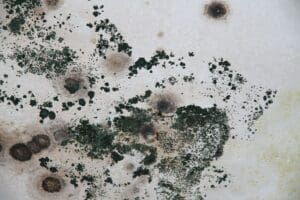Hello, dear readers! As professionals in mold remediation, we've encountered a plethora of mold species that infiltrate homes, affecting not only the structure of the property but also the health of its occupants. Today, let's dive deep into understanding one of the most prevalent molds: Aspergillus.
What Causes Aspergillus to Grow in Your Home?

Much like other molds, Aspergillus has a particular fondness for damp, humid environments. Common reasons for its unwelcome appearance include:
-
Moisture Intrusion: This could be from leaky roofs, windows, or plumbing issues.
-
High Indoor Humidity: Often seen in homes without proper ventilation, especially in spaces like kitchens, bathrooms, and basements.
-
Flooding or Water Accidents: Any significant water event can invite this mold.
-
Old Foods: Aspergillus loves decomposing organic matter, making improperly stored foods a hotspot.
How to Identify Aspergillus?
Aspergillus, while common, can sometimes be overlooked because of its unassuming presence. Here’s how you can spot it:
-
Appearance: It often appears powdery with varying colors - including blue-green, yellow, or even brown and black, depending on the species.
-
Growth Pattern: Prefers organic materials, from your wallpaper and carpet to foods and even HVAC systems.
-
Ubiquity: One of the more unsettling characteristics of Aspergillus is its omnipresence. It's commonly found both indoors and outdoors, making contamination quite easy.
How Aspergillus Impacts Your Health?
While Aspergillus might not have the infamous reputation of "black mold," it poses significant health concerns, including:
-
Allergenic Reactions: Many people develop allergies to mold, and Aspergillus is a common culprit. Symptoms include wheezing, coughing, and skin rashes.
-
Aspergillosis: A respiratory infection caused specifically by Aspergillus. It can range from mild wheezing to more severe conditions, especially in those with compromised immune systems.
-
Mycotoxin Production: Some species of Aspergillus produce mycotoxins, which can be harmful when ingested, inhaled, or come into contact with the skin.
How to Prevent Aspergillus Growth in Your Home?
While the thought of Aspergillus might seem daunting, with the right preventive measures, you can ensure your home remains mold-free. Our top suggestions:
-
Maintain Humidity Levels: Aim to keep your indoor humidity between 30-50%. Dehumidifiers can be a godsend in particularly damp areas.
-
Ensure Proper Ventilation: Especially crucial for moisture-heavy rooms. Extractor fans in bathrooms and kitchens can be quite effective.
-
Regular Home Checks: Periodically inspect your property for any signs of moisture issues or mold growth, addressing them promptly.
-
Store Foods Properly: Ensure perishables are stored in airtight containers, and do not let food sit out for extended periods.
-
Clean Your HVAC System: Regular maintenance can prevent mold growth in the very system that circulates air around your home.
In Conclusion: Aspergillus Mold
While Aspergillus might be a common mold, it shouldn't be a common resident in your home. With the right knowledge and preventive actions, you can ensure a safe and healthy living environment for you and your loved ones.
Suspect you have mold growth? Don't risk it. Consult professionals like us at Bio-One, where we prioritize your health and home. Reach out for a comprehensive inspection and remediation service today.
Stay informed, stay healthy!
